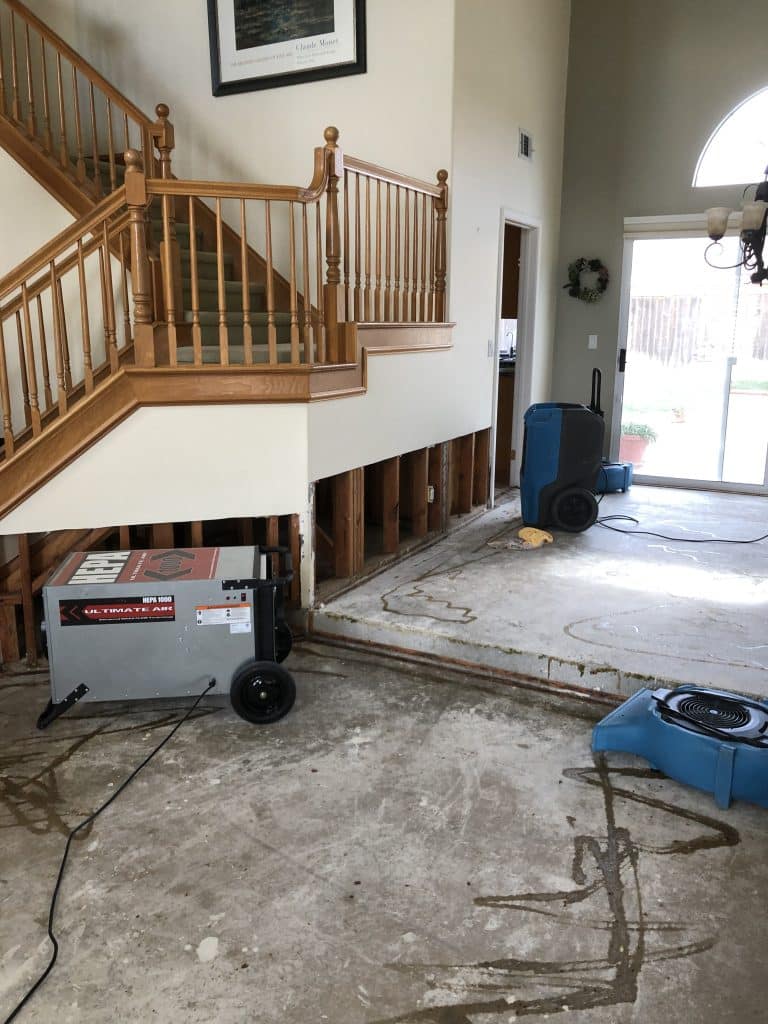What are the steps of Water Damage Restoration?
Water damage restoration is the process of removing water and restoring water-damaged property to its pre-loss condition. When water damage occurs, it’s important to know what water moisture level has caused structural, mold and mildew problems. The longer water sits in a building, the more expensive and potentially dangerous it becomes for everyone involved. It is mandatory that you always follow local water removal protocol.
Steps after water loss:
Here are some steps of water damage restoration: water removal, drying out, dehumidifying & humidity control, cleaning and disinfecting. If you would like all the water out of your water damaged property, you need water extraction. You need at least 2 gallons of water per square foot to leave behind water stains and possible mold growth.
Water Removal: All water damage requires water removal equipment, water extraction is the first step in water damage restoration. It’s important to look at all water-damaged surfaces to see if there are any signs of water seepage or standing water. The water removal process often reveals hidden problems under wet carpeting and subfloors that must be immediately resolved.
Drying Out: Proper drying plays an important part in the water damage restoration process because it allows for early detection of problem areas left behind by mold growth. Use dehumidifiers or air movers to help dry out water-damaged materials quickly before mildew has a chance to grow. Mold loves dark moist areas so it’s crucial you get rid of as much moisture as possible.
Dehumidifying & Humidity Control: Humidity control is important because water loss can cause humidity to soar in your water damaged property. A water-damaged home might be more prone to water damage, mold growth, potentially lower property value, bad smell and even health problems. By removing water from the building structure you are aiding in stopping the spread of mold.
In Conclusion: Many water damage emergencies can be prevented with proper water mitigation, or water removal. Water damages are some of the most expensive losses to repair and may require replacing walls, flooring and other property items. A water removal company like Legend Restoration can help control water damage emergencies quickly.


